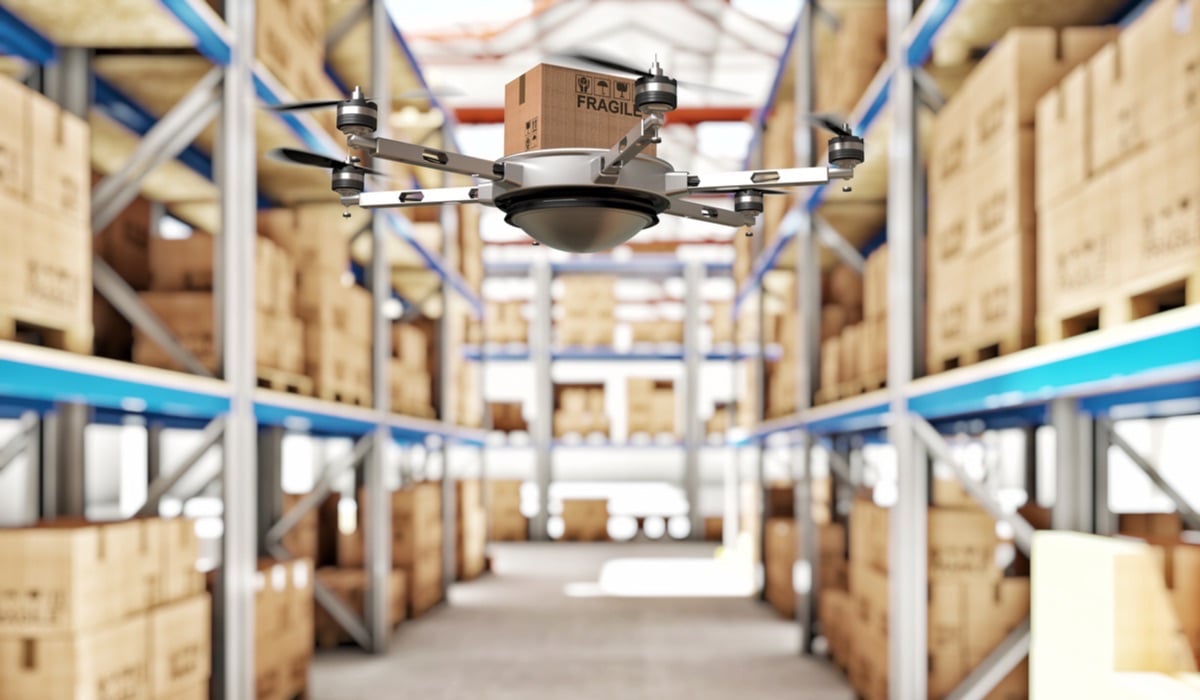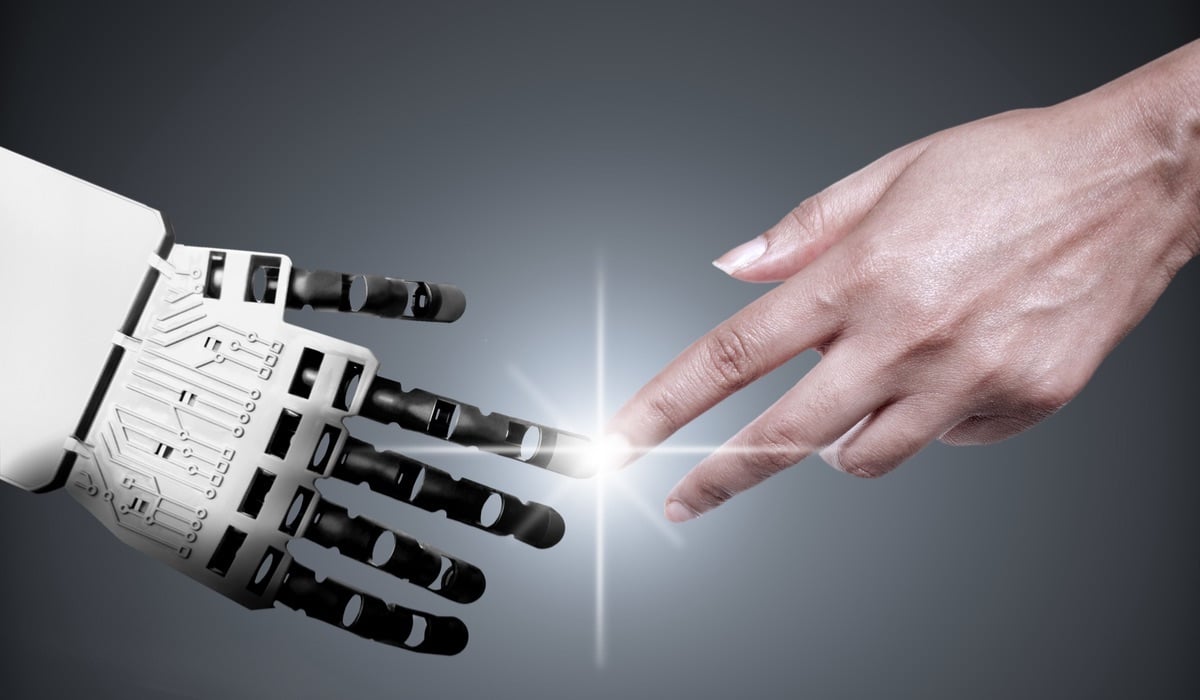The rise of things like Blockchain, IoT (internet of things), cryptocurrencies and robots and automation have all been defining disruptors for the retail supply chain over the last few years.
How are supply chains across the globe currently being impacted by the rise of these disruptors?
Are human jobs at risk?
How can your business adapt to utilise these new technologies?
Answers to all of these questions and more as we take a look into the ‘Four Industrial Revolution’ of modern-day commerce.
The Fourth Industrial Revolution and the emergence of big data, automation, robots and AI have created disruption in the supply chain for many retailers today.
While many retailers have been slow to adapt to the age of digitisation, they have adopted advanced software that has been able to provide them with operational efficiencies and increased data visibility. What I mean by this is that many retail brands have slowly shifted from the age-old manual entry excel spreadsheets to software that can provide accurate, real-time data that is visible to all of their supply chain stakeholders.
So this is where the majority of SME’s (Small, Medium Enterprises) find themselves.
But…
A rapidly changing, technologically driven retail landscape means that each day an increasing number of robots and AI are integrating themselves into the global retail supply chain operations.
In understanding what supply chain operations global supply chains are currently integrating with robotics, you can start to imagine how you could begin to digitize your supply chain operations. So let’s dive in;
Warehousing Management – The introduction of robots and wearable technology has been introduced into warehouse management activities allowing for greater efficiencies, minimizing the likelihood of human error.
So what does this look like?
Amazon is a prime example of automating some of their warehouse activities. They adopted the Kiva system which cost $775 million to put in place. This Kiva system is made of robots that place and stack products all over the warehouse, creating system efficiencies for Amazon as well as reducing overhead expenses. 
Whilst this is a ghastly amount and likely very unaffordable if you are an SME (Small, Medium Enterprises), there are entry-level robots that are cheaper and can be used to create this kind of efficiency for your operations. The cheaper Baxter robot has an approximated lifespan of about three years and, costs approximately $25,000 is able to work over 2000 hours straight in a plastic factory.
This, as you know, is not a possibility within the human workforce as it is in violation with the social compliance standards as laid out by the SA8000. The level of production efficiencies that can be achieved through automated process are definitely worth your time in research.
Inventory Management – In June 2016, Walmart began testing the use of drones for better inventory management. Walmart said that it could take up to a month for its inventory to be checked manually, but takes only 24 hours with the use of a drone. The drone flies around the warehouse, scans every items’ barcode, allows for real time data insight and is also able to quickly locate any misplaced items. This not only makes for an efficient inventory management system, but also a well managed warehouse.
The automation of the simpler routine warehouse and inventory systems such as stacking/moving stock around and labeling boxes as per specifications should free up your labour force to spend more time and resources into optimizing your supply chain and its operations for further enhancements and innovation. Robotics and automation should be seen as collaborative for more enhanced and optimised operating systems.
These are only two of the examples of where automated robots and technological advancements are currently being applied to supply chain activities, but they are certainly not the only areas that are being technologically transformed.
Last year the world saw Amazon make the very first drone delivery, an exciting technological advancement in the area of delivery and transportation. This, however also indicates the rapid pace at which retail is moving and transforming.
In order for you to keep up with the likes of a global retailer like Amazon or Walmart, you will need to begin planning for the digitisation of your supply chain.
So the big question then…
The number one question much of the retail labour force is asking “Will robots be taking away our human jobs?”
There is absolutely no doubt that with the rise of automated robots and AI that there will be a reduction in the number of labour needed in your retail supply chain;
The production line – Robots can work through the night, doing away with overtime, overworked and underpaid working conditions that often result in social compliance violations.
Automated robots improve the efficiency of the production line, they are able to produce products at a much faster rate than is ever achieved  through human labour.
through human labour.
Warehouse and inventory management – Stock can be moved around and stacked up accordingly, inventory can be managed through the flight of a drone with real-time data updates and the ability to trace misplaced inventory. This all helps to create an optimised warehouse and provides near perfect insight into inventory enabling, better stock control and demand forecasting.
While at this point you may think that I have painted the picture of a robotic, automated retail supply chain, this is not true.
Human labour is still very much needed.
Let me tell you why.
1. Production and supply chain automation is expensive. The initial start up costs may be too much for many smaller retail brands.
2. Robots will need maintenance and calibration – This may require additional training for your current labour force, but this should also be seen as an opportunity in the market for the employment of a higher skilled labour force.
Humans are necessary for the running of your supply chain. “No matter how well encoded your robots are, technology is not advanced enough for the appropriation of human judgment.”
According to Brandon White of Kenco, “The best solution to introducing AI innovation into the supply chain is a “hybrid” of humans and AI technology working alongside one another.” Adopt an optimistic perspective – robots and automation should enhance productivity and efficiency.
How?
Collaboration. Collaboration with machinery is absolutely necessary to create an efficient technologically advanced supply chain.
So, while robots and AI certainly have a place in the supply chain, humans are still essential for every aspect of the supply chain. However, the current jobs of your existing labour force will have to change to accomodate the age of technology and the efficiencies that it presents.
You will essentially need a higher skilled workforce to work in collaboration with the automation technology that you seek to adopt. You will need people who can calibrate and code higher tech machinery, and you will also need more leadership and HR roles.
You may or may not be feeling the pressure to adopt AI automation into your supply chain, but the reality is, it’s on the horizon. Your customer demands more of you and more of your supply chain. The question is, what are you doing to meet their demands? As we move into the future, your comfort zone may need to be left behind.
Let us know in the comments section how automation, robotics or AI have affected your supply chain.

Want to know more about one of our many services? Contact us to find out more information about what API can do for your company today.
Address
Copyright © 1981 – 2022 API. All Rights Reserved.